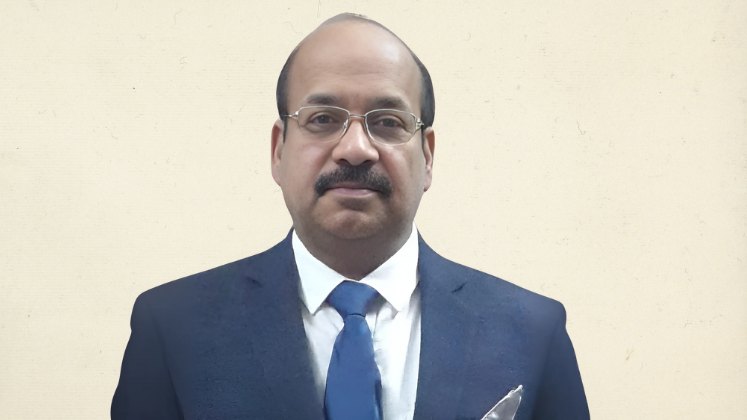The trade corridor between India and Bangladesh, once defined by mutual dependence, is now showing signs of strain, leaving Indian exporters increasingly uneasy. For decades, India has supplied nearly 80% of Bangladesh’s cotton yarn imports, serving as a key raw material source for its globally competitive US $ 38.48 billion RMG industry. But new regulatory roadblocks are beginning to unsettle this carefully built ecosystem.
The current disruption stems from India’s recent decision to restrict Bangladeshi RMG imports to just two ports, Kolkata and Nhava Sheva, effectively shutting land borders. This move came in response to Bangladesh’s curbs on Indian cotton yarn exports through five major land ports, including Benapole and Banglabandha, which previously handled nearly 30% of Indian yarn exports to Bangladesh.
In 2024, India exported US $ 1.6 billion worth of cotton yarn and US $ 85 million of manmade fibre (MMF) yarn to Bangladesh.
Structurally, Indian spinners still enjoy a strong competitive position. Yarn conversion costs in India are low — typically Rs. 2 per count, translating to Rs. 60/kg for 30s count yarn. Faster working capital cycles (2–3 months in India vs. 9 months in Bangladesh) give Indian players greater liquidity and production agility.
Indian yarn delivered to Chattogram port is priced at US $ 2.19 per kilogram, which is significantly cheaper than locally produced Chittagong yarn priced at US $ 2.45 per kg, even after government incentives.
No wonder, several established Indian companies, including Gokul Yarns Pvt. Ltd., Texperts, Oasis Textiles, Salona Group, SP Yarns, Smart Sourcing Inc., KS Spinning Mills, Texmine Resources Ltd., Bansal Spinning Mills Pvt. Ltd., Shreeji Cotfab Ltd., and the SP Group, have been actively supplying yarn and textile products to Bangladesh for over a decade.
However, experts say for small and medium-sized textile mills in India, land routes offered cost efficiencies that are no longer viable. Rerouting through distant seaports like Mundra, Nhava Sheva or Thoothukudi has added both logistical complexity and cost.
This friction is especially concerning given Bangladesh’s rapid rise as India’s fastest-growing yarn market, clocking a 25% CAGR over the last five years.
Since the landport ban, monthly exports to Bangladesh have fallen from 100 million kilograms to about 90 million kilograms.
On the receiving end, Bangladeshi garment exporters — who use Indian yarn extensively — are also under pressure. With Indian yarn costing more and arriving slower, RMG manufacturers are bracing for higher input costs and potential delays, just as they face global price squeezes and delivery expectations.
Indian Exporters Face Delays, But Optimistic
Bangladesh is still a top priority for Indian yarn exporters. “Bangladesh is undoubtedly our biggest market. We export more than 4,000 containers of yarn here annually, which accounts for approximately 8% of India’s total yarn exports,” said Ishaan Verma, Director, Square Corporation, a yarn sourcing and exporting company with additional business verticals in textile manufacturing (spinning), real estate, apparel and hospitality.
Similarly, Raghubir Singh, Factory Manager, Shreeji Cotfab Ltd., another leading Indian manufacturer specialising in dyed recycled yarns made from regenerated cotton and polyester fibres, shared, “Bangladesh is a big volume market for us; some buyers place orders for over 100 tonnes at once. No other market gives us that scale. Currently, 50% of our exports go to Bangladesh. It’s our largest single market.”
However, he lamented about the setbacks being faced due to trade tensions between the two neighbours. “We are now considering reducing our focus on Bangladesh and looking at alternate markets like Sri Lanka, Vietnam, South Africa and Portugal,” Raghubir added.
Echoing similar concern, Ashwani Ahuja, Head of Exports, Oasis Textiles, a 20-year-old recycled yarn manufacturer with units in Punjab and Himachal Pradesh, said there’s an urgent need for both governments to talk and resolve these problems. “Business and trade partnerships shouldn’t suffer because of policies that don’t match today’s trade realities,” he emphasised.
Still, experts believe the impact on India’s yarn export volumes will likely remain contained. “The only real impact has been an increase in lead time by about 10 days. Interestingly, the expected benefit to local spinning mills didn’t materialise either. Prices have stayed the same, showing that the market forces are more complex than just supply routes,” noted Ishaan Verma.
Looking forward, Square Corporation is setting its sights on two clear directions: material innovation, especially in non-cotton alternatives. “We believe Bangladesh will continue to grow. Capacity is expanding every year and so will our focus and presence,” added Ishaan Verma.
Others too, despite the setbacks, remain optimistic about Bangladesh market. Biswajit Nandy, GM-Marketing, Manan Textech Global Pvt. Ltd., a trading house which offers a wide spectrum of raw materials, from fibre to finished fashion, mentioned, “Even with global slowdowns, our business in Bangladesh is growing every year. We are multiplying our turnover by two to four times annually. We already have a local office and are expanding by hiring new staff.”
The company’s portfolio spans across polyester (raw white and dope-dyed PSF), rayon (VSF), multiple cotton varieties, comber noil and a diverse range of yarns including cotton (combed, carded, compact, organic, BCI, Fairtrade, CMIA), synthetic blends (polyester, viscose, acrylic, modal) and linen. It also supplies knitted and woven fabrics as well as garments for men, women and children, targeting both casual and workwear segments.
| Yarn conversion costs in India are low — typically Rs. 2 per count, translating to Rs. 60/kg for 30s count yarn. Faster working capital cycles (2–3 months in India vs. 9 months in Bangladesh) give Indian players greater liquidity and production agility. |
Indian Yarn Finds New Ways to Reach Dhaka
For Indian yarn exporters, sending consignments to Bangladesh is no longer straightforward; suppliers are now being pushed to rethink their logistics strategies. Many Indian suppliers are considering multimodal solutions, including coastal shipping, riverine transport via the Indo-Bangla protocol route and collaboration with local freight handlers in Bangladesh, to ease the burden. In fact, some alternative routes offer up to 10% savings on shipping. While these methods may not fully replace land routes, they offer a temporary cushion for maintaining trade flow. For instance, Shreeji Cotfab Ltd., is now exploring inland water transport and even train-based cargo solutions to stabilise delivery timelines and manage buyer expectations in Dhaka and Chittagong.
Similarly, Winsome Textile Industries Ltd., which supplies high-end mélange, modal, viscose and cotton-polyester blend yarns, has started evaluating alternative shipping methods to protect its long-standing business in Bangladesh. “When you’re dealing with premium, customised yarn lots, delays affect not just delivery but also brand confidence,” Alok Mishra, Senior VP noted.
Alok Mishra averred that Bangladesh remains a critical market for the company, accounting for nearly 20% of its total sales. Although Winsome does not have a local office, it operates through a dedicated team that visits monthly to manage operations and client relations. The company plans to expand production capacity within three months and is eyeing further expansion in Bangladesh, India, Cambodia and Myanmar, capitalising on the region’s growing role in textile manufacturing as production costs in China rise.
Experts also say that the overall share of logistics in the final product cost will be minimal and even a 15% – 20% increase in logistics cost will have an almost negligible impact on final product prices.
Also, the idea that exports to India coming only through two seaports— Kolkata and Nhava Sheva— will overwhelm the system, is simply not true. India’s logistics infrastructure is amongst the better ones globally and the World Bank’s Logistics Performance Index (LPI) Report 2023 proves this.
It says Indian ports recorded an average turnaround time of just 0.9 days. That’s better than the USA (1.5 days), Australia (1.7 days), Belgium (1.3 days), Canada (2.0 days), Germany (1.3 days), UAE (1.1 days), Singapore (1.0 days) and Russia (1.8 days).
The focus should also be on smarter planning. After all, buyers in the US and EU wait for around 25-30 days for sea shipments and plan their strategies accordingly. There’s no reason why businesses in India and Bangladesh can’t adapt similarly and plan ahead.
Indian importers will also need to work with logistics consolidators and aggregators.
And let’s not forget the silver lining: under the SAFTA framework, Bangladeshi goods exported to India still enjoy duty-free access. That’s a competitive advantage that remains untouched by the port ban.
Indian Yarn Exports Go Green — And Gain Ground
The focus on sustainability is not just an ethical alignment but a strategic one. Buyers across Europe and the US are tightening compliance expectations on supply chains, and Bangladeshi RMG factories, which are already leaders in LEED-certified green production, are aligning with suppliers who can meet similar environmental standards upstream. Indian mills offering recycled, traceable and ethically manufactured yarns are therefore finding stronger footholds in Bangladesh’s future-forward textile ecosystem.
For example, Manan Textech Global has begun supplying niche biodegradable yarns made from banana and pineapple fibres. These unconventional options are gaining traction among premium buyers such as M&S and Tommy Hilfiger. “These buyers don’t just want fabric, they want sustainable ones,” said Biswajit Nandy. However, sustainability comes with a price: pineapple yarn costs nearly Rs. 20 per kg more than conventional cotton. Still, demand is slowly climbing as brands move to meet consumer pressure for traceable, eco-friendly materials. Another long-term exporter to Bangladesh, Oasis Textiles, manufactures pre-dyed recycled yarns from regenerated cotton and PET fibres. With certifications including GRS, Oeko-Tex and ISO, the company produces 35,000 kg of recycled yarn per day and emphasises quality, consistency and large-lot uniformity, traits that have made it a reliable partner for Bangladeshi buyers.
Likewise, Sri Siddhi Natural Fibers Pvt. Ltd., a Mumbai-based company specialising in the ginning and spinning of 100% cotton products, is also heavily focused on sustainability.
“Buyers in Bangladesh are increasingly willing to invest in premium products. Looking ahead, we are considering the establishment of a physical presence in Bangladesh within the next couple of years to strengthen our market position,” highlighted Rintu Kanu Pandya, MD of the company.
Square Corporation, too, offers 100% cotton, organic, BCI and recycled yarns.
Despite the growing push for sustainable practices, Chetan Laroiya, MD, Envision, which sources cotton and polyester-cotton (PC) yarns from across India, China and other Asian regions, observed that the market isn’t always willing to pay a premium for eco-friendly yarns. Price flexibility, he noted, typically comes into play only when there is a clear and visible difference in quality.
To address sustainability expectations, Envision has introduced strict quality control protocols, supported by dedicated inspection teams in both India and Bangladesh. Its strong network in Bangladesh spans over 30 years and includes more than 100 customers, with major buyers such as Epyllion Group, Ecotex and others.
At the same time, several other Indian exporters, including Gokul Yarns Pvt. Ltd., SP Yarns, Texmine Resources Ltd., Salona Group and Smart Sourcing Inc., are also expanding their sustainable offerings. From BCI-certified blends to slub and mélange yarns dyed with less water and fewer chemicals, these companies are tailoring their products to a market increasingly influenced by ESG (Environmental, Social and Governance) metrics. It’s clear that despite the current disruptions, industry stakeholders on both sides are advocating for dialogue over deadlock and finding ways to restore trade flows and protect regional supply chain synergies.










